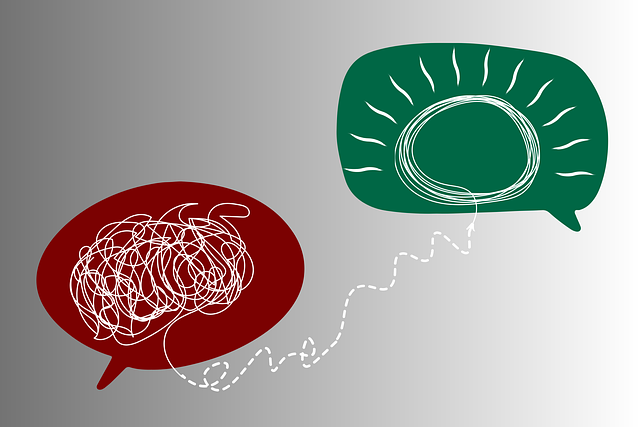Greenwood Village Bipolar Disorder Therapy employs a comprehensive evaluation strategy that combines quantitative and qualitative methods to assess program effectiveness. This includes tracking symptom reduction, participant engagement, and overall well-being through various metrics such as the Mood Management Rating Scale and Social Skills Training assessments. By integrating both hard data on success rates and rich narratives from participants, the program ensures continuous improvement tailored to diverse mental health concerns, fostering enhanced mental wellness and resilience in Greenwood Village.
Mental wellness programs, especially those focusing on bipolar disorder therapy in Greenwood Village, require rigorous evaluation methods to ensure effectiveness. This article explores various assessment tools and techniques, from quantitative surveys to qualitative interviews, to gauge the impact of these programs. We delve into best practices for measuring success and continuous improvement strategies, highlighting the importance of a multifaceted approach. Understanding these evaluation methods is crucial for optimizing mental health care in Greenwood Village.
- Understanding Mental Wellness Programs and Their Evaluation
- Assessment Tools for Bipolar Disorder Therapy in Greenwood Village
- Quantitative vs Qualitative Evaluation Methods
- Measuring Success and Continuous Improvement Strategies
Understanding Mental Wellness Programs and Their Evaluation

Mental wellness programs are designed to support individuals in managing and improving their mental health, addressing a range of issues from stress management and anxiety disorders to more severe conditions like bipolar disorder, for which Greenwood Village Bipolar Disorder Therapy offers specialized services. Evaluation methods play a crucial role in understanding these programs’ effectiveness and ensuring they meet the unique needs of participants.
The process involves assessing various aspects, including the program’s impact on symptoms, participant engagement, and overall well-being. Self-Care Routine Development for Better Mental Health can be one such evaluation metric, looking at how programs encourage and facilitate healthy habits that contribute to mental wellness. Additionally, Trauma Support Services and Compassion Cultivation Practices might be evaluated for their ability to foster resilience and emotional coping mechanisms among participants.
Assessment Tools for Bipolar Disorder Therapy in Greenwood Village

In Greenwood Village, evaluating the effectiveness of bipolar disorder therapy is paramount to ensuring optimal patient outcomes. Assessing progress in Greenwood Village Bipolar Disorder Therapy involves a multifaceted approach, leveraging specialized assessment tools tailored to this complex condition. These instruments go beyond mere symptom tracking, delving into various aspects of the patient’s life and emotional healing processes.
One such tool is the Mood Management Rating Scale, which quantitatively measures a patient’s ability to regulate moods, a crucial component in bipolar disorder therapy. Social Skills Training (SST) assessment protocols are also employed to gauge improvements in interpersonal interactions, as social support plays a significant role in mood stabilization. By combining these methods with qualitative feedback from patients and therapists, healthcare professionals in Greenwood Village gain a holistic view of each patient’s progress, facilitating more targeted and effective interventions for bipolar disorder therapy.
Quantitative vs Qualitative Evaluation Methods

When evaluating mental wellness programs, such as those offering Greenwood Village bipolar disorder therapy, it’s essential to consider both quantitative and qualitative methods. Quantitative evaluation involves numerical data analysis, focusing on statistical measures like survey scores, attendance rates, and changes in symptom severity. This approach helps quantify program effectiveness and can be particularly useful for tracking progress over time. For instance, a mental wellness podcast series production might measure listener engagement and the impact of specific episodes on mood management strategies.
Qualitative methods, on the other hand, delve deeper into participants’ experiences and perceptions. They include interviews, focus groups, and open-ended surveys that capture individual stories, insights, and challenges. These methods foster empathy building strategies by providing a nuanced understanding of how the program resonates with each person. For example, qualitative feedback can highlight the supportive atmosphere created in group therapy sessions or the practical application of coping mechanisms learned through interactive workshops.
Measuring Success and Continuous Improvement Strategies

Measuring success and implementing continuous improvement strategies are vital components of any comprehensive mental wellness program, including those designed to address bipolar disorder in Greenwood Village. Evaluating the effectiveness of therapy involves a multifaceted approach that goes beyond simple outcomes. It’s not just about reducing symptoms; it’s also about enhancing overall well-being. Therefore, programs should incorporate metrics that capture improvements in emotional intelligence, self-care practices, and mental health awareness, as these are key indicators of recovery and resilience.
Regular feedback from participants, along with structured assessments and qualitative data, can provide valuable insights into the program’s impact. By analyzing this data, therapists and program coordinators can identify areas where adjustments are needed, whether it’s refining therapeutic techniques, updating resources, or tailoring support to better meet individual needs. This ongoing evaluation ensures that the mental wellness program remains dynamic, evidence-based, and aligned with the evolving needs of those seeking treatment for bipolar disorder in Greenwood Village.
Evaluating mental wellness programs, such as Greenwood Village Bipolar Disorder Therapy, requires a balanced approach that incorporates both quantitative and qualitative methods. By utilizing assessment tools tailored to specific disorders and employing diverse evaluation techniques, therapists can accurately measure the success of interventions while fostering continuous improvement. This comprehensive strategy ensures that programs like those in Greenwood Village remain effective and responsive to the unique needs of individuals seeking mental health support.














